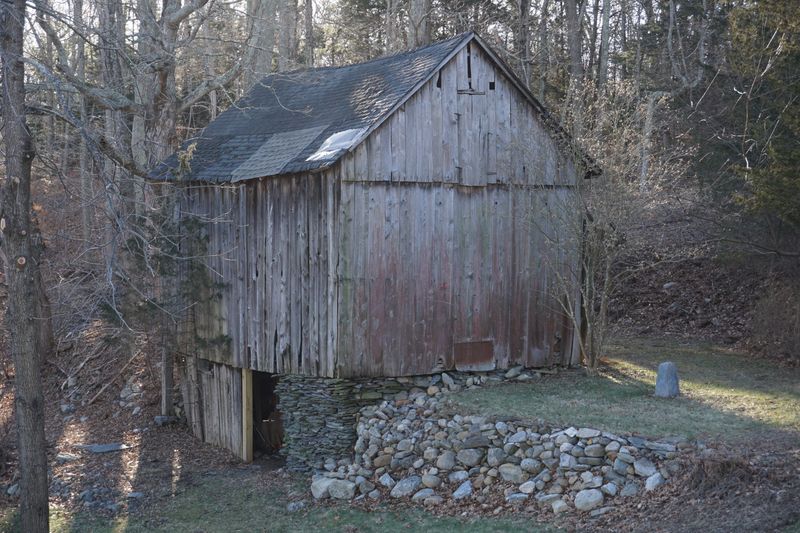My Old Barn

The swaybacked barn lists slightly toward the writer’s window, bearing witness to a life, and a career in regression. Both our days are numbered.
The barn once held tons and tons of hay, bales stacked to the rafters. A cow was milked there long ago, in the lower level where a stanchion fashioned from an old tractor tire still hangs. Now the cavernous interior hosts rickety deck furniture and defunct lawnmowers.
The barn is older than the house my wife and I live in, older than the old farmhouse we tore down 33 years ago to build it. The man we bought the property from said the farmhouse was raised in 1917 and the barn was old then. Its cross beams are not milled, but rather whole tree trunks minus the bark. Its posts are proper lumber, but clearly salvaged from an unlucky relative.
We put a third course of shingles on her more than 30 years ago, and I helped my neighbor Rob, who stored his hay there, jack her up and replace some rotting sills a decade ago. That stiffened the ridgeline for a spell. Bits and pieces of asphalt shingles litter the ground after a big blow.
Recently an aging Yankee carpenter, shaking his head the while, has been patching what holes he can on the roof without venturing toward the peak, which would be foolhardy. The term unaesthetic doesn’t do justice to the crazy-quilt result. Jimmy not only thinks we’re daft, he tells us flat out.
Thanks to the barn’s tumbledown dry-rock foundation, we could spend $50,000 and still have a degenerating, unstable structure. Guilty about taking our money, Jimmy charged us just $40 on his last visit. I rounded it up to $50. He shook his head and took it. “My brother has a bulldozer,” he has said more than once.
When my father-in-law first laid eyes on our barn 32 years ago, he asked, “When you going to tear that thing down?” That was up for serious consideration recently and the vote was close, 1 to 1. Inertia triumphed. The barn will live to deteriorate another day.
On the side that faces my window, some of her wide vertical boards are faintly red, the fashionable color she must have sported in her heyday. The sun and the weather have rung the pigment out of the rest. She is now the epitome of New England gray, gloomy and blotchy with darker streaks after a rain. Plywood and sheet metal cover larger holes in the boards. Two smaller, beady gaps up high stare unblinkingly my way. There is even a Picasso-esque slit for a nose.
She is no longer picturesque, but she has retained her dignity and almost all of her stature. She has better posture than I do. And she is useful yet, as I flatter myself to be.
Our old barn is the last remnant of agricultural artifacts that used to litter this micro-farm, which nourished a family of eight Polish-Americans throughout the Great Depression. There were corn cribs, chicken coops and pigpens; rusting hay rakes, scythes and tractor parts.
Behind the barn, in the old makeshift dump that we still use on occasion, a tractor seat arises straight and true from decades of debris. A body can rest his weary bones on it and admire the swamp below. You can’t budge that seat one iota with a crowbar. Soon it became clear what must be holding it steady.
Perched at my keyboard, I wonder what she makes of me. My hair is white now, not blond, thinning under the comb over. I’m stooped from years of bending over typewriters and computers. The parallels are obvious. Neither of us can do what we once did. Our foundations are suspect, our superstructures grown subversive. And there are no solutions: just short-term fixes delaying the inevitable.
I wonder, too, if there is empathy there or rivalry. After all, we are engaged in a race to the bottom, she and I. Who will crumble to the ground first?
On his last visit, Jimmy pointed to the resplendent maple whose expansive limbs loom over our barn like blunt swords of Damocles. “If you’re lucky, those will all come down at once,” he said with a smile.
And that is what we likely will do. Let the maple decide.